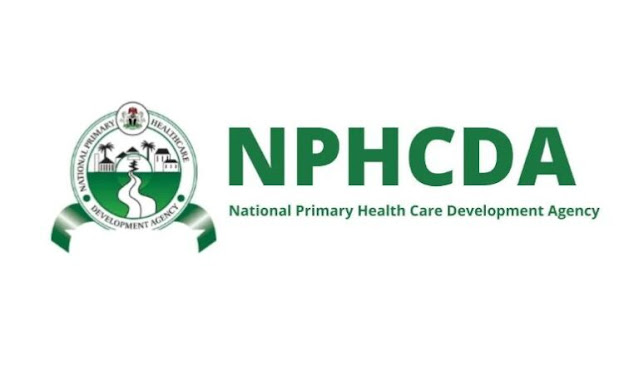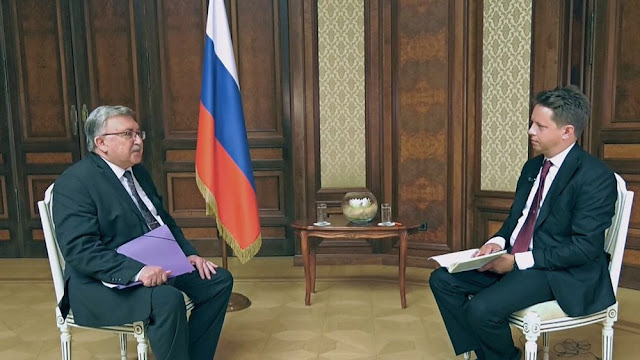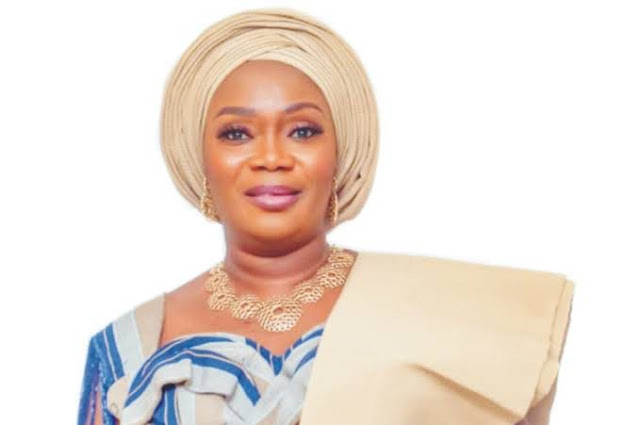In a bold move to fortify Nigeria’s primary healthcare system, the Federal Government has mobilized a staggering N192 billion to address escalating costs and enhance service delivery across the nation’s grassroots health facilities. This initiative, announced recently, comes at a critical juncture when the country is battling persistent health challenges, including high maternal and child mortality rates, infectious diseases, and the lingering effects of the COVID-19 pandemic. The allocation underscores the government’s commitment to achieving universal health coverage (UHC) and aligning with Sustainable Development Goal 3, which aims to ensure healthy lives and promote well-being for all ages.
The decision to inject N192 billion into primary healthcare represents a multifaceted response to the rising operational costs that have plagued the sector for years. These costs, driven by inflation, supply chain disruptions, and the need for modern infrastructure, have strained state and local governments, often leaving primary health centers (PHCs) underfunded and ill-equipped. By mobilizing these funds, the Federal Government, through the Coordinating Minister of Health and Social Welfare, Prof. Ali Pate, aims to revitalize over 10,000 PHCs nationwide, ensuring they become functional hubs for preventive care, vaccinations, and basic treatments.
Understanding the Primary Healthcare Landscape in Nigeria
Primary healthcare forms the bedrock of any effective health system, serving as the first point of contact for individuals seeking medical attention. In Nigeria, a nation of over 200 million people, the primary healthcare system has historically been fragmented and under-resourced. Established under the 1978 Alma-Ata Declaration, which emphasized primary health care as the key to achieving “Health for All,” Nigeria’s PHC network was designed to deliver essential services like immunization, maternal and child health, nutrition, and treatment for common ailments. However, decades of neglect, coupled with rapid population growth and urbanization, have rendered many facilities obsolete.
According to the World Health Organization (WHO), Nigeria’s health expenditure as a percentage of GDP remains abysmally low at around 3.9%, far below the recommended 15% Abuja Declaration target set by African Union member states in 2001. This underfunding has resulted in a dire shortage of healthcare workers, inadequate medical supplies, and dilapidated infrastructure. In rural areas, where over 50% of Nigerians reside, access to PHCs is often hindered by poor roads, insecurity, and cultural barriers. Urban centers, on the other hand, face overcrowding and secondary facilities absorbing primary-level cases due to the weakness at the base level.
The N192 billion mobilization is thus not merely a financial injection but a strategic intervention to reverse these trends. Prof. Ali Pate, in a statement during the announcement, highlighted that “the rising costs of healthcare delivery, exacerbated by global economic pressures and local inflationary trends, necessitate urgent action. This funding will bridge the gap, ensuring that every Nigerian, regardless of location, has access to quality primary care.” The funds are earmarked for critical areas such as facility upgrades, procurement of essential medicines, training of health workers, and the deployment of digital health technologies.
The Surge in Healthcare Costs: Causes and Implications
The escalation in primary healthcare costs in Nigeria is a complex phenomenon influenced by both domestic and international factors. Inflation, which hit double digits in recent years, has driven up the prices of medical supplies, fuel for ambulances, and salaries for personnel. The naira’s depreciation against major currencies has made imported pharmaceuticals and equipment prohibitively expensive. For instance, basic items like syringes, antibiotics, and vaccines, which are largely imported, have seen price hikes of up to 200% in the last two years.
Global events have compounded these issues. The COVID-19 pandemic disrupted supply chains worldwide, leading to shortages and inflated prices for personal protective equipment (PPE) and diagnostic tools. Even post-pandemic, the ripple effects persist, with ongoing conflicts in key supplier countries affecting availability. Domestically, insecurity in regions like the Northeast and Northwest has increased transportation costs and risks, while climate change-induced floods have damaged health facilities, necessitating costly reconstructions.
The implications of these rising costs are profound. Without intervention, PHCs risk closure, leading to increased reliance on expensive secondary and tertiary hospitals. This not only burdens the national budget but also exacerbates health inequities, particularly for low-income and rural populations. Maternal mortality rates, already at 512 deaths per 100,000 live births (far above the global average), could worsen without accessible prenatal care. Similarly, vaccine-preventable diseases like measles and polio continue to claim lives due to stockouts in PHCs.
The Federal Government’s response through the N192 billion allocation is timely. Breakdown of the funds reveals allocations for infrastructure rehabilitation (N60 billion), drug and supply procurement (N50 billion), workforce development (N40 billion), and monitoring and evaluation (N42 billion). This structured approach aims to ensure accountability and measurable outcomes, with partnerships involving state governments and development agencies like the WHO and USAID.
Historical Context and Policy Evolution
Nigeria’s journey toward strengthening primary healthcare has been marked by ambitious policies and intermittent implementations. The National Health Policy of 1988 prioritized PHC, leading to the establishment of over 30,000 health facilities. However, the 1990s structural adjustment programs under IMF influence shifted focus to market-driven reforms, sidelining public health investments. The Millennium Development Goals (MDGs) era (2000-2015) saw some gains, particularly in immunization coverage, but progress was uneven.
The advent of the Sustainable Development Goals (SDGs) in 2015 refocused attention on UHC. The National Health Act of 2014 introduced the Basic Health Care Provision Fund (BHCPF), which allocates 1% of the Consolidated Revenue Fund to PHCs. Yet, implementation has been hampered by bureaucratic delays and state-level disparities. The Saving One Million Lives (SOML) program, launched in 2012, aimed to reduce maternal and child mortality but fell short due to funding shortfalls.
Under President Bola Tinubu’s administration, health sector reforms have gained momentum. The creation of the Ministry of Health and Social Welfare in 2023 consolidated efforts, with Prof. Pate at the helm driving initiatives like the Nigeria Health Sector Renewal Investment Initiative (NHSRII). The N192 billion mobilization is a flagship component of this initiative, building on previous efforts like the deployment of 5,000 midwives under the Midwives Service Scheme and the integration of telemedicine in remote areas.
This funding also aligns with international commitments. Nigeria’s participation in the Global Financing Facility (GFF) for health has unlocked additional resources, while collaborations with the Bill & Melinda Gates Foundation have bolstered vaccination drives. By addressing cost rises head-on, the government is positioning Nigeria to meet its UHC targets by 2030, potentially reducing out-of-pocket expenses from 70% to under 40%.
Breakdown of the N192 Billion Allocation: Strategic Investments
Delving deeper into the allocation, the N192 billion is distributed across key pillars to maximize impact. Infrastructure rehabilitation receives N60 billion, targeting the upgrade of 8,000 PHCs. This includes constructing new buildings, renovating existing ones, and installing solar-powered refrigeration for vaccine storage. In states like Borno and Yobe, where conflict has destroyed facilities, this funding will rebuild and fortify centers against future threats.
Procurement of essential medicines and supplies accounts for N50 billion. This will ensure a steady supply of 12 tracer drugs, including antimalarials, antihypertensives, and contraceptives, through the National Health Logistics Management System. The aim is to eliminate stockouts, which currently affect 40% of PHCs, and introduce generic alternatives to curb costs.
Workforce development, allocated N40 billion, focuses on training and recruitment. Nigeria’s doctor-to-patient ratio stands at 1:5,000, well below the WHO’s 1:1,000 recommendation. The funds will support scholarships for medical students, continuous professional development for nurses, and incentives for postings in underserved areas. Community health extension workers (CHEWs), the backbone of PHCs, will receive enhanced training in digital health and emergency response.
The remaining N42 billion is for monitoring, evaluation, and innovation. This includes deploying electronic health records in 2,000 facilities and piloting AI-driven diagnostics for diseases like tuberculosis. Performance-based financing will reward high-performing PHCs, ensuring transparency and efficiency.
Stakeholder Reactions and Expert Insights
The announcement has elicited positive responses from stakeholders. The Nigerian Medical Association (NMA) praised the initiative, with President Dr. Uche Rowland noting, “This funding is a game-changer; it addresses the root causes of our health system’s inefficiencies.” Civil society organizations like the Health Reform Foundation of Nigeria (HEFON) emphasized the need for equitable distribution, urging the government to prioritize northern states where health indicators are poorest.
Experts, however, caution that implementation is key. Dr. Amina Mohammed, a public health specialist at the University of Lagos, stated, “While N192 billion is substantial, sustained funding is essential. Rising costs are not a one-off; we need policies to localize production of drugs and build resilient supply chains.” International partners have pledged matching funds; the WHO’s Africa Regional Director, Dr. Matshidiso Moeti, commended Nigeria’s proactive stance, offering technical support for the rollout.
Challenges remain, including corruption risks and intergovernmental coordination. The Federal Government has promised oversight through the Independent Corrupt Practices Commission (ICPC) and quarterly audits to ensure funds reach intended beneficiaries.
Broader Implications for National Development
Beyond immediate health benefits, the N192 billion investment has ripple effects on Nigeria’s economy and society. A robust PHC system reduces the burden on higher-level facilities, freeing resources for specialized care and research. Healthier populations are more productive, potentially boosting GDP by 2-3% through decreased absenteeism and increased workforce participation.
For women and children, the impact is transformative. Enhanced maternal services could lower Nigeria’s under-five mortality rate from 104 to under 50 per 1,000 live births. Immunization coverage, currently at 57%, could reach 90%, curbing outbreaks of polio and yellow fever. In the fight against non-communicable diseases like diabetes and hypertension, which account for 27% of deaths, early detection at PHCs will save lives and costs.
Environmentally, sustainable practices in facility upgrades, such as solar energy, align with Nigeria’s climate goals. Socially, empowering community health workers fosters trust and reduces stigma around health-seeking behaviors.
Challenges Ahead and Recommendations
Despite the optimism, hurdles persist. Rising costs could erode the funds’ value if inflation continues unchecked. Logistical issues in remote areas, coupled with insecurity, may delay implementation. To mitigate these, experts recommend public-private partnerships (PPPs) for drug manufacturing and digital tracking systems for fund disbursement.
Capacity building at state levels is crucial; many local governments lack the expertise to manage large allocations. Integrating the initiative with existing programs like the National Health Insurance Scheme (NHIS) will enhance sustainability. Long-term, investing in health education and nutrition will address preventive aspects, reducing future costs.
The Path Forward: Toward Universal Health Coverage
As Nigeria mobilizes N192 billion for primary healthcare, the nation stands at a pivotal moment. This funding is more than financial; it’s a declaration of intent to prioritize the health of its people. With diligent implementation, monitoring, and stakeholder collaboration, it could catalyze a health revolution, making quality care accessible to all. Prof. Pate’s vision of “a Nigeria where no one is left behind in health access” is within reach, provided the government sustains momentum amid rising costs.
In conclusion, the Federal Government’s action is a beacon of hope in a sector long starved of resources. By tackling cost escalations head-on, Nigeria is not only safeguarding lives but also investing in a healthier, more prosperous future. The success of this initiative will depend on collective effort, but the foundation laid today promises enduring benefits for generations to come.






